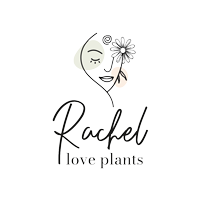August was a very pleasant month for my family. I spent a few days in the countryside and others at the beach, in the company of many families from different parts of Spain. In discussing our professions, I’ve been able to see how wrong we are about certain beliefs inculcated by our parents or grandparents, or that we read in blogs and social networks…
I’m going to summarise my views on myths and truths so that you can care for and enjoy plants in your home.
I’ll start with the Myths that surprised me the most:
- Plants are toxic to pets.
– False: not all plants are toxic. Some, like catnip, are harmless and even beneficial to cats. However, it’s important to find out about each plant before introducing it into your home if you have pets. But I’d also add that many people are intolerant to the mere contact of plant varieties, so consider each living creature in its reality before considering its purchase.
- Plants only need water to survive.
– False: Although water is essential and some plants can live for some time in water alone (such as pothos, tradescantias, bamboo canes, etc.), plants also need light, nutrients and the right environment to flourish. Each species has its own needs.
- Houseplants don’t produce oxygen, they consume it.
– Myth: All plants, including houseplants, photosynthesise and produce oxygen, although some do so in smaller quantities because of their nature. Remember this when you decorate a room in your home. I can assure you that you won’t die from a lack of oxygen at night !
- Plants need to be watered every day.
– False: Over-watering is one of the most common mistakes that cause many plants to develop fungus, rot their roots and ultimately have a shorter-than-average lifespan. Watering frequency depends on:
- a) the type of plant (a ficus repens is different from a cactus),
- b) the size of the pot (an 8 cm plastic pot or a 45 cm ceramic pot does not retain moisture in the same way),
- c) environmental conditions (it’s not the same to live in a northern mountain range where it rains a lot as on the coast of Almeria). It’s always a good idea to check the soil moisture before watering, wherever the plant is located.
- Plants can grow anywhere in the house.
– False: each plant has specific needs in terms of light and temperature. Placing them in the wrong place can affect their growth. Some plants can thrive in shady areas, others need to be placed near a window and many others in an outdoor garden. The same applies to draughts. Some plants are unaffected by exposure to hot or cold air conditioning, while others are affected by the very opening of a door.
- Plants can grow in any type of soil.
– False: each plant has its own substrate requirements. Using the right soil is crucial for healthy plant growth; some plants need a more impermeable soil, others a more drained soil. Find the type of soil best suited to each plant and you’re guaranteed success.
I’d like to conclude by inviting you to ask the advice of your local garden centre dealer when it comes to choosing a particular variety and explaining where you want to place it. I’m sure their advice will be a great help.
Now to the Truths I’ve heard, because it’s not all myth:
- Plants improve air quality.
– True: many houseplants can help filter pollutants from the air and increase humidity, which can be good for your health. Nasa studies published on the Internet explain the results of this research and, although it’s not a panacea, it’s a plus for living with these natural wonders.
- Plants can reduce stress.
– True: having plants in your home can have a positive effect on mood and reduce stress, by promoting a sense of well-being. Their colour, shape, quantity, etc. help to keep you in touch with what is essential to me, Mother Earth.
- Plants need regular care.
– True: to keep plants healthy, you have to water them, fertilise them, prune them according to their specific needs and even talk to them or play them music! Did you know that some of our horticulturalists play music in the glasshouses during the working day simply because their plants seem to grow better?
Each plant requires specific care, but that’s why we’ve decided to include them in our daily lives, to share their benefits in exchange for our care.
- Plants can attract insects.
– True: some plants can attract insects, but this depends on the species and the environment. Keeping plants clean and healthy can help minimise this problem if it is one for you. These days, it’s good manners to preserve the health of the environment and contribute as much as possible to maintaining the biodiversity of ecosystems. Choose varieties according to location and predisposition to attract butterflies or ladybirds, which are very, very pleasant in the garden.
I’m sure you know many other myths and truths that escape me, and I’d be delighted if you’d share them with all of us.
What I do know is that I couldn’t live without plants. They’re wonderful companions in my home, so it’s important to know how to look after them properly. With the right knowledge, you can enjoy a greener, healthier environment for your family.


